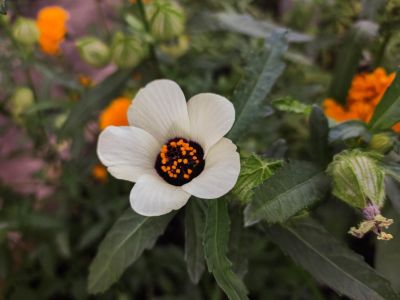What is Flower of an Hour?
Hibiscus flower of an hour is technically a perennial in frost-free areas, but it is usually grown as an annual. It forms a neat mound about 18 inches to 24 inches (46-61 cm.) tall and blooms between midsummer and early autumn. The flowers are pollinated by nectar-feeding insects, including bumblebees and butterflies, which hover around the plant during the bloom season. Once the flowers fade, inflated seed pods take their place. They open when ripe, scattering seeds indiscriminately throughout the garden. The plant can become weedy and, in fact, is listed as an invasive species in Washington and Oregon.
Growing Flower of an Hour
Growing flower of an hour is easy, but you won’t find bedding plants so you’ll have to start them from seeds. Sow seeds outdoors in fall and they will germinate in spring when the soil stays warm both day and night. Since they are slow to emerge, mark the spot so you can remember to leave them plenty of room. You can get a head start by starting the seeds indoors four to six weeks before the last expected frost date. They can take two months or more to germinate. Give flower of an hour plants a location in full sun with rich, moist soil that drains well. If the soil isn’t particularly rich, amend it with compost or other organic matter before planting. Use 2 to 3 inches (5-8 cm.) of mulch to help the soil hold moisture. Water the plants slowly and deeply in the absence of rain, stopping when the water begins to run off. Pull back the mulch and spread 2 inches (5 cm.) of compost over the root zone in midsummer before the plants begin to bloom. Picking off faded blossoms may help prolong the bloom season and prevents self-sowing, but it may be more trouble than it’s worth because of the number of blossoms produced.
